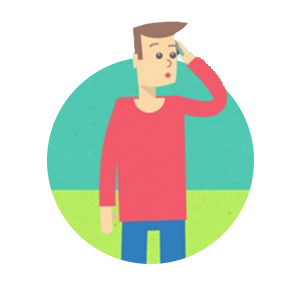Cognitive Behavioral Therapy: An Effective Form of Treatment
What Is Cognitive Behavioral Therapy?
Cognitive behavioral therapy (CBT) is an effective treatment for a range of challenges. It focuses on changing one’s negative thoughts and behaviors, which helps to resolve said challenges. Challenges include relationship difficulties, issues with drug abuse, eating disorders, and mental illnesses like anxiety.
Cognitive behavioral therapy sessions work by first helping an individual identify, understand, and then change their harmful attitudes and behaviors. Ultimately, the individual adopts new, more effective ways for dealing with their challenges.
A distinguishing factor of cognitive behavioral therapy is that it is typically short-term versus long-term. It usually takes around 5 to 10 months for most emotional problems to resolve or improve substantially. And sessions average 50-minutes, which occur each week.
In these sessions, the client and therapist work together to identify underlying problems and come up with new solutions. Here, the therapist is on the same level as the client. This takes the pressure off of the individual and creates a comfortable, mutual relationship.
The History Behind Cognitive Behavioral Therapy
Cognitive behavioral therapy came about in the 1960s after psychiatrist Aaron Beck discovered his depressed clients to have an internal dialogue. It was like they were having a conversation in their head, but they only revealed part of the conversation to him.
This led Beck to realize that the link between thoughts and feelings is extremely significant. He founded the term “automatic thoughts,” which describes emotional thoughts that exist in one’s mind. He found that while we aren’t always aware of these thoughts, we could be coached into identifying them.
This discovery then led to his groundbreaking finding that targeting negative thoughts is crucial to overcoming one’s difficulties. Hence, the backbone of cognitive behavioral therapy, which can treat a wide range of problems.
To communicate the importance of thinking in its very name, Beck called his creation “cognitive therapy.” Today it is known as cognitive behavioral therapy because there is now a focus on behavioral change and techniques as well.
The Role of Cognitive Distortions
Cognitive behavioral therapy is based on the idea that negative thinking, or cognitive distortion, is at the root of our issues. It’s not about the events themselves, but how we look at them.
Take, for example, an overly anxious individual named Jill who hasn’t heard from her friend in a week. Jill automatically assumes her friend is angry with her and worries nonstop until she hears from him.
This is an example of jumping to conclusions, a type of cognitive distortion, or an example of negative thinking. In cognitive behavioral therapy, Jill’s therapist helps her recognize her negative thinking and develop a better approach to her problem. For example, she could be proactive and call him at the onset of her worry, instead of waiting anxiously for him to call.
In addition to jumping to conclusions, there are many other forms of cognitive distortion that reinforce our negativity. These include:
- Polarized thinking, or “black and white thinking,” whereas we think in extremes. Something is either horrible or fantastic, perfect or worthless.
- Filtering, in which we place a heavy focus on the negatives and ignore the positives.
- Blaming, whereas we simply place blame on ourselves or others for every bad thing that happens.
- Overgeneralization, as characterized by one’s assumptions and conclusions based on small factors or events.
- Catastrophizing, also known as “magnifying or minimizing,” is summed up as someone expecting the worst.
- Emotional reasoning, in which we assume our feelings must be true, despite a lack of facts or evidence.
- Control fallacies, whereas we feel either externally controlled (e.g., by fate or luck) or internally controlled (directly responsible).
- Fairness fallacy, in which we measure every situation on a scale of fairness, which often leads to disappointment or objection.
- Personalization, in which individuals take everything personally; they assume that others’ actions are direct reflections of their feelings toward them
Correcting these cognitive distortions can help with day to day problem-solving. It is also an important part of cognitive behavioral therapy, which can effectively treat many conditions including anxiety and depression.
The Three-Column Technique: A Strategy of CBT
To diminish their client’s cognitive distortions, cognitive behavioral therapists often utilize something called the three-column technique.
The client first folds a piece of paper vertically into three different columns. They’re then instructed to write down their negative thoughts in the first column. For example, one may write “I’m a total failure” after missing a deadline at work. Then, they must identify their cognitive distortion in the second column, which in this case would be polarized thinking.
And in the third column, they are to correct their thinking based on facts, not negativity or pessimism. This client may write something like, “I missed a deadline, but it’s okay. Nobody’s perfect and I will make up the work.”
This technique is so important and effective because it forces the individual to recognize their irrational thinking and correct it. Over time, these individuals will start to notice a pattern in their negative thinking. And they will begin to reframe it to reflect reality instead of their false distortions.
How Does Cognitive Behavioral Therapy Work?
When discussing the subject of therapy, one may picture an individual talking and a therapist exclusively listening. But that is not the case in cognitive behavioral therapy; again, a mutual and equal relationship is established.
The individual first explains what kind of problems they are having and what they would like to see improve. These then become the outline for discussions during each session. Each week, they will make more and more progress as they collectively work on…
- Tackling these issues
- Exploring possible fixes
- Identifying effective coping skills
- Creating healthy thinking/behavioral patterns
The therapeutic process doesn’t stop with these sessions. The client is often assigned homework between sessions, which will aid the two in identifying triggers or negative patterns. It can also help them determine effective ways for handling them.
For example, a therapist may assign his or her client the task of keeping a diary. The entries to come may reveal a vital part of the healing process for the client. Then, later in treatment, a therapist may assign other exercises or tasks related to coping and changing behavior.
This structure is crucial to the success of cognitive behavioral therapy. The steady progress makes for lasting effects, allowing the individual to continue the efforts alone, outside of therapy.
Who Should Seek Cognitive Behavioral Therapy?
Just about anybody could benefit from cognitive behavioral therapy. However, it may be most helpful to those who have specific problems they would like and need to address. Here’s a shortlist of problems cognitive behavioral therapy can help and how it does so:
- Depression: Among many other elements, depression is primarily characterized by down moods and negative thought patterns. Cognitive behavioral therapy works by targeting this negativity and introducing new coping strategies that help the individual deal with everyday challenges.
- Anxiety: There are a variety of anxiety disorders including generalized anxiety disorder, social anxiety disorder, and post-traumatic stress disorder. Nerves and uneasiness are at the center of each of these disorders. And distorted thoughts—or those cognitive distortions we talked about earlier—can make them even worse. Cognitive behavioral therapy, however, can remedy the effects by targeting negative thoughts and teaching clients new, healthier patterns.
- Alcohol Abuse and Addiction: Alcohol abuse and addiction are tricky issues, as sufferers are at great risk of relapsing. Cognitive behavioral therapy focuses on improving the client’s life in many ways in addition to just getting sober. This will further motivate them to stay away from the substance and lead a healthy, happy life.
In addition to depression, anxiety, and addiction, cognitive behavioral therapy has also proven to treat and alleviate:
- Anger
- Mood swings
- Obsessive-compulsive disorder (OCD)
- Relationship issues
Sometimes, a combination of cognitive behavioral therapy, interpersonal therapy, and or another form of treatment proves most effective.
Cognitive behavioral therapy creates real and lasting change. It can significantly reduce the symptoms of emotional disorders, as proven through clinical trials. And it can prove just as effective as medication in individuals struggling with anxiety or depression. Furthermore, its benefits carry on even after the individual finishes therapy.
Begin Cognitive Behavioral Therapy at Thriveworks
Sometimes we need a little extra help and guidance in life. If you think you could benefit from professional, goal-oriented mental health help, consider giving cognitive behavioral therapy a try.
You can begin cognitive behavioral therapy or choose from many other types of therapy right now at Thriveworks Counseling. We offer in-person counseling at over 150 offices across the US as well as online counseling opportunities.
Find a Counselor
Start counseling, therapy, or life-coaching today with a skilled, caring provider near you!
Online Counseling
Are you interested in doing online sessions? Explore our online counseling opportunities.
More about Beginning Therapy
![]()







